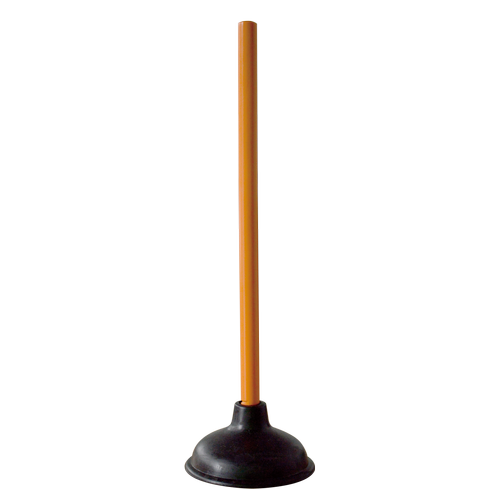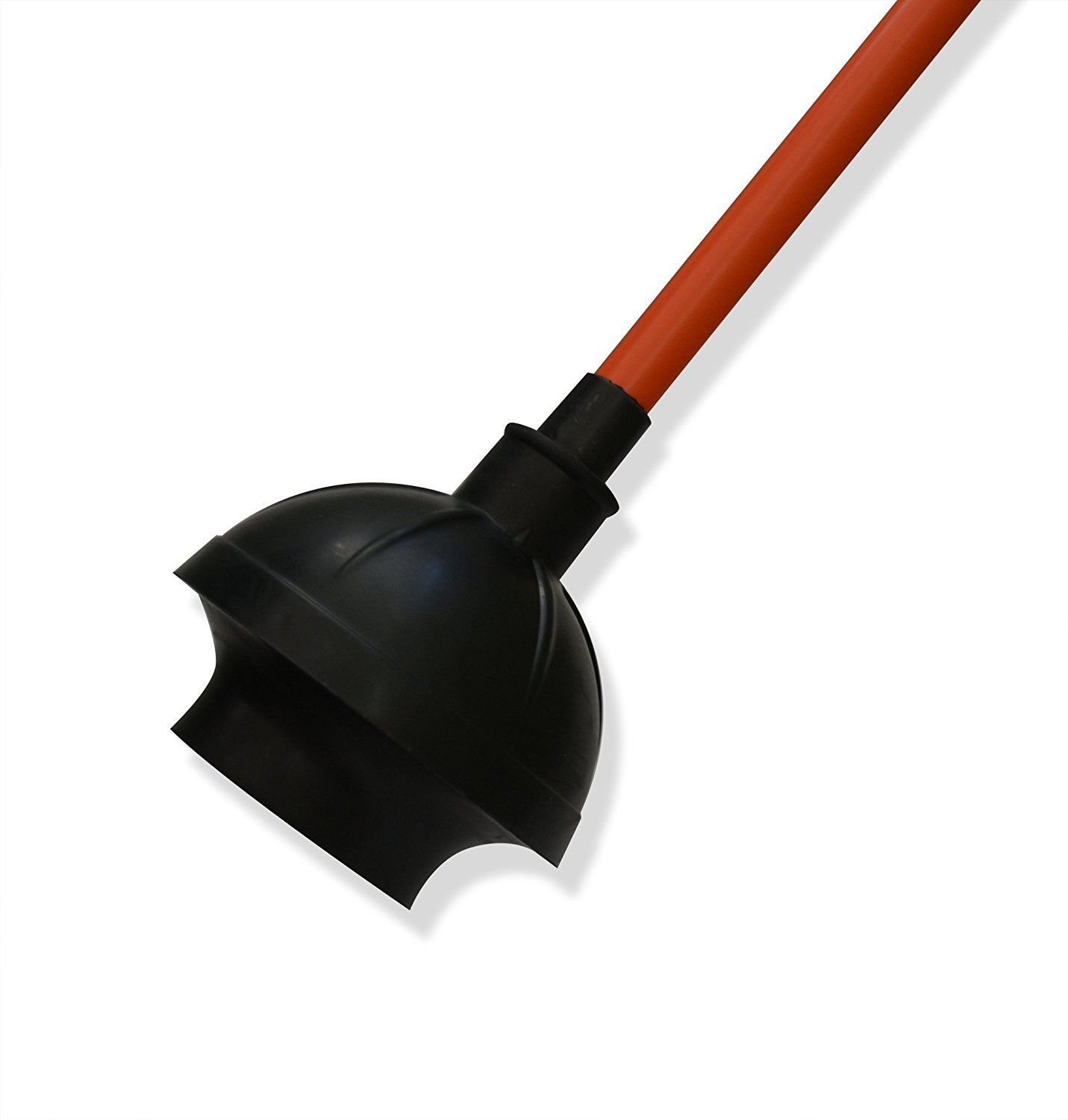Ways to Effectively Utilize Plunger and Drain Cleaners: Expert Advice
Ways to Effectively Utilize Plunger and Drain Cleaners: Expert Advice
Blog Article
Just about everyone maintains their own individual assumption when it comes to A Guide to Plungers (and How to Use Them).

Intro
Correct upkeep of home drains pipes is important for preventing blockages and guaranteeing smooth water circulation. Among the secret tools in every property owner's toolkit is the plunger, alongside numerous drain cleansers created to take on stubborn clogs effectively. This article explores exactly how to make use of bettors and drain cleaners properly to maintain your drains streaming easily.
Section 1: Understanding Plungers
Sorts of Plungers
There are several sorts of plungers available, each designed for various types of drains pipes and obstructs. The most usual types include mug plungers, flange bettors, and accordion bettors.
Just How Plungers Work
Plungers deal with the principle of producing stress and suction to remove obstructions. When effectively used over a drainpipe, they produce a vacuum cleaner that can pull out particles or separate clogs.
Selecting the Right Bettor
Selecting the right bettor depends on the sort of drain and the nature of the blockage. Mug bettors are suitable for sinks and bathtubs, while flange plungers are better fit for commodes as a result of their design.
Common Errors with Bettors
Staying clear of these blunders ensures effective plunging: incorrect seal around the drain, inadequate force, and not clearing surrounding debris.
Section 2: Using Plungers Effectively
Prep work
Prior to diving, make certain the plunger covers the drainpipe completely and develops a limited seal. Clear any type of noticeable debris around the drain opening.
Strategy
Start with mild diving motions to develop suction. Rise stress gradually, using a steady rhythm. Repeat as necessary until the drainpipe gets rid of.
Repairing Tips
If diving doesn't work, attempt readjusting the seal, using petroleum jelly for a better seal, or using a various sort of plunger.
Section 3: Recognizing Drainpipe Cleaners
Sorts Of Drainpipe Cleaners
Drain cleaners can be chemical or enzymatic. Chemical cleaners utilize solid chemicals to dissolve blockages, while chemical cleaners use natural enzymes to break down raw material.
Just How Drainpipe Cleaners Work
Chemical cleaners react with blockages to dissolve them, while enzymatic cleansers break down organic products like hair and grease without harming pipelines.
Safety and security Considerations
Constantly put on handwear covers and eye protection when using chemical drain cleansers. Make sure ample air flow and adhere to maker instructions thoroughly.
Eco-Friendly Alternatives
Think about using vinegar and cooking soft drink or enzyme-based cleansers for green options that are safer for pipelines and the setting.
Area 4: Making Use Of Drainpipe Cleansers Successfully
Application Methods
Pour chemical cleaners straight right into the drain opening. Enable them to work for the recommended time prior to flushing with hot water. Chemical cleansers ought to sit over night.
Safety measures
Avoid blending different types of cleansers, as this can produce poisonous fumes. Never utilize chemical cleaners in conjunction with a bettor, as splashing can occur.
Handling Stubborn Blockages
For relentless obstructions, take into consideration making use of a pipes serpent or calling a specialist plumber to prevent damages to pipelines.
Final thought
To conclude, understanding how to make use of bettors and drain cleaners properly is crucial for keeping healthy pipes systems. By selecting the right tools and strategies, house owners can tackle small clogs and protect against major pipes issues down the line.
How To Properly Use A Plumbing Snake To Clear Drains
When any drain clogs in our home arise, we tend to gravitate toward the plunger and little else. In cases where the plunger and its vacuum-created pressure are not able to clear clogs, many immediately move to harmful chemicals or simply call their plumber to fix the issue.
we’re happy to help with all drain cleaning needs and concerns. This includes informing you on a few other home remedies you may have at your disposal for minor to moderate clogs, one of which is the use of a plumbing snake. Many people have never used one of these before – let’s go over the steps to take when your drain clogs and you have a plumbing snake available.
Attempt Plunger Use
The first step here, as we noted above, should indeed be to grab your plunger when you notice a drain clog and attempt to resolve it this way. If you’re unsure how to use a particular type of plunger, our plumbers can answer any questions you have. If this doesn’t do the trick, however, you move on to the snake.
Locate And Prepare Snake
A plumbing snake is a metal or plastic device that’s generally about a quarter of an inch thick. It’s design with significant extensions, meant to reach down into your clogged drain and push the clog out. Snakes also contain drain augers that will latch onto and push stubborn blockages.
If your plunger doesn’t clear a clog, locate your snake and bring it to the drain in question. We also recommend keeping a bucket nearby to collect the clog once you pull it out, plus we’d advise wearing goggles and possibly protective gloves.
Feed Snake
Once you’re ready to go, feed the snake slowly down the drain, using the crank device it comes with to keep it moving until it finds the clog. Once this happens, much of the clog will be latched onto the coil so you can pull it out, while the rest will simply break up and flow downward.
Detach Debris
Remove the snake slowly from the drain, and once you’ve done so, pick off any debris that’s stuck to the coil. This is another area where wearing gloves is a must.
Flush Drain
Finally, take a few minutes to ensure the snake has done its job correctly. If you’ve been using it on a toilet, flush the toilet a couple times and make sure everything flows well. If you’ve used it on a different drain, flush it with some room temperature water.
https://www.mybuddytheplumber.com/blog/how-to-properly-use-a-plumbing-snake-to-clear-drains/

Application Methods
Pour chemical cleaners straight right into the drain opening. Enable them to work for the recommended time prior to flushing with hot water. Chemical cleansers ought to sit over night.
Safety measures
Avoid blending different types of cleansers, as this can produce poisonous fumes. Never utilize chemical cleaners in conjunction with a bettor, as splashing can occur.
Handling Stubborn Blockages
For relentless obstructions, take into consideration making use of a pipes serpent or calling a specialist plumber to prevent damages to pipelines.
Final thought
To conclude, understanding how to make use of bettors and drain cleaners properly is crucial for keeping healthy pipes systems. By selecting the right tools and strategies, house owners can tackle small clogs and protect against major pipes issues down the line.
How To Properly Use A Plumbing Snake To Clear Drains
When any drain clogs in our home arise, we tend to gravitate toward the plunger and little else. In cases where the plunger and its vacuum-created pressure are not able to clear clogs, many immediately move to harmful chemicals or simply call their plumber to fix the issue.
we’re happy to help with all drain cleaning needs and concerns. This includes informing you on a few other home remedies you may have at your disposal for minor to moderate clogs, one of which is the use of a plumbing snake. Many people have never used one of these before – let’s go over the steps to take when your drain clogs and you have a plumbing snake available.
Attempt Plunger Use
The first step here, as we noted above, should indeed be to grab your plunger when you notice a drain clog and attempt to resolve it this way. If you’re unsure how to use a particular type of plunger, our plumbers can answer any questions you have. If this doesn’t do the trick, however, you move on to the snake.
Locate And Prepare Snake
A plumbing snake is a metal or plastic device that’s generally about a quarter of an inch thick. It’s design with significant extensions, meant to reach down into your clogged drain and push the clog out. Snakes also contain drain augers that will latch onto and push stubborn blockages.
If your plunger doesn’t clear a clog, locate your snake and bring it to the drain in question. We also recommend keeping a bucket nearby to collect the clog once you pull it out, plus we’d advise wearing goggles and possibly protective gloves.
Feed Snake
Once you’re ready to go, feed the snake slowly down the drain, using the crank device it comes with to keep it moving until it finds the clog. Once this happens, much of the clog will be latched onto the coil so you can pull it out, while the rest will simply break up and flow downward.
Detach Debris
Remove the snake slowly from the drain, and once you’ve done so, pick off any debris that’s stuck to the coil. This is another area where wearing gloves is a must.
Flush Drain
Finally, take a few minutes to ensure the snake has done its job correctly. If you’ve been using it on a toilet, flush the toilet a couple times and make sure everything flows well. If you’ve used it on a different drain, flush it with some room temperature water.
https://www.mybuddytheplumber.com/blog/how-to-properly-use-a-plumbing-snake-to-clear-drains/

I am very serious about How to Unclog Your Sink with a Plunger and I'm hoping you enjoyed reading our post. Make sure you pause to share this post if you liked it. We treasure your readership.
Call Today Report this page